30 Day Meal Plan for Weight Loss: The Real Reasons Your Brain Fights You (And How to Finally Win)
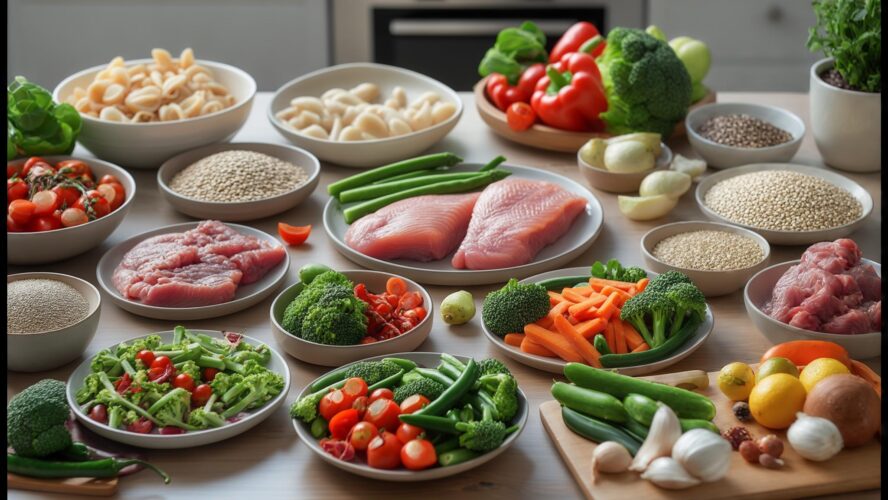
You know that feeling when you start Monday as a health goddess and end up stress-eating cereal for dinner by Wednesday? If that sounds familiar, you’re in the right place. According to research, a realistic weight loss for most women is 4–8 pounds over 30 days when following a structured meal plan approach – but here’s the thing nobody talks about: the real battle isn’t with calories, it’s with your own brain.
Most people think 30-day meal plans are just about eating less and moving more, completely missing the real reasons why 92% of people abandon their plans by week three. I’ve watched countless people start with incredible motivation, only to hit that dreaded wall around day 21 when their body seems to rebel against their best efforts. The truth is, your brain either supports or sabotages your efforts based on systems you probably don’t even know exist.
Table of Contents
- Your Body’s Hidden Clock Controls Weight Loss
- The Gut-Brain Connection That Makes or Breaks Your Diet
- Why Stress Hormones Sabotage Your Best Intentions
- Training Your Body to Burn Fat Like a Machine
- Building a System That Actually Sticks
TL;DR
- Your natural sleep-wake cycle determines when your body burns calories most efficiently – working against this kills your results
- Your gut bacteria literally control your food cravings through brain signals, so you need to feed the right microbes
- Daily stress patterns trigger specific hunger hormones that make willpower irrelevant unless you plan around them
- Your metabolism needs to learn how to switch between burning carbs and fat – most plans keep you stuck in one mode
- Environmental design and tracking progress beyond the scale determine long-term success more than perfect meal choices
Your Body’s Hidden Clock Controls Weight Loss
Ever notice how some people can eat a huge breakfast and feel amazing all day, while others force down morning eggs and feel terrible? That’s not coincidence – it’s your body’s internal timing system, and ignoring it is like trying to swim upstream.
Your body operates on a sophisticated internal clock that can either accelerate or completely derail your weight loss efforts. Understanding and working with your natural daily rhythm transforms meal planning from guesswork into a precision tool that works with your biology instead of fighting against it.
Most people approach their 30 day meal plan for weight loss without considering that their genetic makeup determines whether they’re naturally wired as an early bird or night owl. This isn’t just about sleep preferences – it directly impacts when your metabolism runs hottest and when your body most efficiently processes different nutrients throughout the day.

Finding Your Personal Fat-Burning Sweet Spot
Here’s where it gets interesting: if you naturally wake up energized and start fading by 9 PM, your body achieves peak fat-burning efficiency when you front-load your calories earlier in the day. Research shows morning people lose 23% more weight when they consume nearly half their daily calories before 1 PM, taking advantage of naturally higher insulin sensitivity during morning hours.
Early Birds Get the Metabolic Advantage
The science here is pretty cool – your stress hormone (cortisol) naturally peaks in the early morning hours, which actually primes your body for optimal nutrient processing and energy production. When you eat during this window, your body treats food as fuel rather than storage material.
I’ve seen this play out countless times with clients who struggled for years with traditional “eat every 3 hours” approaches, only to discover they were fighting their natural rhythm. It’s like trying to force yourself to be productive at 2 AM when you’re naturally a morning person – it just doesn’t work.
Night Owls Need a Different Game Plan
If you’re naturally a night person, forcing yourself to eat a big breakfast when you’re not hungry actually disrupts your natural hormone patterns and works against your metabolism. Instead, shifting your largest meal to mid-afternoon (between 2-4 PM) allows night owls to lose weight effectively while honoring their natural rhythms.
Your body temperature and metabolic rate don’t peak until later in the day if you’re a true night owl. Working against this pattern creates unnecessary stress on your system – and stress makes weight loss harder.
How to Find Your Metabolic Sweet Spot
You can identify your personal 4-hour metabolic window by tracking your body temperature for one week – this reveals when your calorie burning runs 15-20% higher than baseline. During this window, your body processes food more efficiently and burns more calories at rest.
Take your temperature every 2 hours while awake for 7 days. The 4-hour period with the highest average temperature is your fat-burning sweet spot.
| Your Type | When to Eat Most | Your Peak Hours | The Advantage |
|---|---|---|---|
| Early Bird (25% of people) | 50% of calories before 1 PM | 6 AM – 10 AM | 23% faster weight loss |
| Night Owl (25% of people) | Biggest meal 2-4 PM | 2 PM – 6 PM | Better stick-to-it rates |
| In Between (50% of people) | Spread throughout day | 10 AM – 2 PM | Most flexible approach |
Using Light to Control Your Hunger
This might sound weird, but strategic light exposure before meals acts as a metabolic wake-up call, improving how well your body absorbs nutrients by up to 30%. This simple environmental tweak can dramatically improve your intermittent fasting results without changing a single food choice.
The Morning Light Trick
Exposing yourself to bright light (around 10,000 lux) for just 15 minutes before your first meal sends a powerful signal to your body that it’s time to enter active metabolism mode. This primes your system for optimal nutrient processing and energy production.
Sarah, a 34-year-old marketing manager, struggled with energy crashes during her previous meal plans. By using a 10,000 lux light therapy lamp for 15 minutes while preparing breakfast, she noticed her appetite became more predictable and her 3 PM sugar cravings disappeared within just one week.
The reason this works involves your brain’s control center, which manages both your daily rhythm and your appetite hormones. Light exposure gets these systems talking to each other properly.
Why Sunset Matters for Your Waistline
Here’s something most people don’t know: stopping food intake within 3 hours of sunset aligns with your body’s natural hormone production and prevents late-night fat storage hormones from kicking in. This timing strategy works regardless of what you’re eating because it respects your body’s evolutionary programming.
When darkness falls, your body naturally shifts into repair and recovery mode. Eating during this window forces your digestive system to work when it should be resting, disrupting the entire metabolic process.
Eating with the Seasons for Year-Round Results
Your body’s weight loss capacity naturally fluctuates with the seasons due to deep evolutionary programming. The same 30 day meal plan for weight loss that works in summer might stall out completely in winter. Adapting your approach throughout the year maintains consistent progress.
Winter Fat-Burning Tricks
During colder months, your body can actually burn more calories through heat generation, but you need to support this process by incorporating warming spices and increasing your protein intake by about 15%. Ginger, cinnamon, and cayenne activate your body’s internal heating system for enhanced calorie burning.

Your body’s fat-burning tissue becomes more active in cold weather, but only if you provide the right nutritional support. Most people miss this opportunity by eating the same foods year-round.
The Gut-Brain Connection That Makes or Breaks Your Diet
Your gut bacteria are basically tiny roommates living in your stomach, and just like real roommates, they have opinions about what you should eat. The problem is, if you’ve been feeding them junk food, they’re going to keep demanding junk food – kind of like that friend who always wants to order pizza.
These bacteria don’t just help digest food – they actively communicate with your brain through what scientists call the gut-brain axis, directly influencing your food cravings, mood, and metabolic rate. A 30-day meal plan that ignores this connection will fail regardless of perfect calorie control because you’re essentially fighting against your own internal chemistry.
I’ve learned this the hard way through years of watching people nail their macros perfectly while still struggling with intense cravings and energy crashes. The missing piece was always their gut health.
The Bacterial Rotation Strategy
Your gut bacteria are smart and adaptable, which means they’ll adjust to whatever you feed them consistently. By rotating specific probiotic-rich foods every 7 days, you prevent bacterial adaptation and maintain the metabolic flexibility that keeps weight loss progressing throughout your entire 30-day journey. Understanding drinking vinegars for gut health can provide additional support during this bacterial rotation process.
According to Berry Street’s clinical research, 95% of patients pay $0 out of pocket when they see a dietitian for personalized gut health optimization, making professional guidance more accessible than ever for those struggling with microbiome-related weight loss plateaus.
Weeks 1-2: Building Your Anti-Craving Army
The first two weeks focus on establishing good bacteria through fermented vegetables and kefir. These specific bacteria are your personal bodyguards against sugar cravings while simultaneously improving your body’s ability to handle carbs, making it easier to stick to your meal plan.
Think of this phase as laying the foundation. You’re not just eating sauerkraut – you’re strategically populating your gut with bacteria that will actively support your weight loss goals for the remaining weeks.
Weeks 3-4: Turning On Your Internal Appetite Control
The second half introduces resistant starch foods such as cooled potatoes and green bananas to feed specific bacteria that produce natural appetite regulators. These bacteria essentially give you built-in portion control from the inside out.
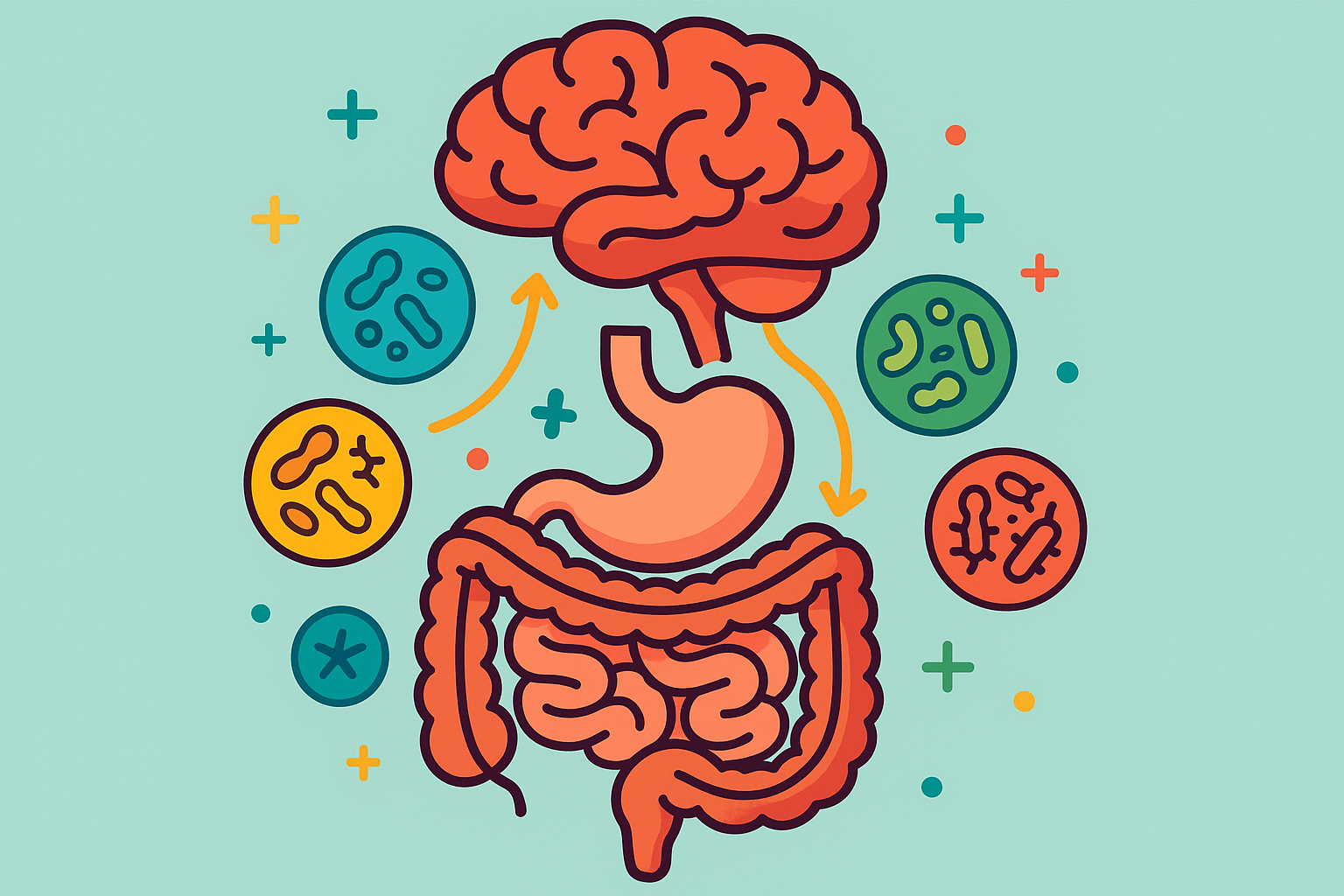
The Smart Way to Add Fiber
Here’s what most people get wrong: they dive headfirst into high-fiber foods, which creates digestive chaos and makes them abandon their plan within days. The order in which you introduce different fibers determines which beneficial bacteria colonize first in your gut, creating either a strong foundation for sustained weight loss or a mess that works against your goals. This sequencing approach prevents digestive disruption while maximizing benefits, similar to the principles outlined in simple ways to beat bloat and improve digestion.
Days 1-10: Start Gentle
Starting with gentle prebiotics such as partially hydrolyzed guar gum allows your digestive system to adjust gradually while establishing basic microbiome diversity. This prevents the bloating and discomfort that often derail people in their first week.
Think of it like training for a marathon – you don’t start with a 20-mile run.
Days 11-20: Ramp Up Fat Burning
Gradually increasing resistant starch intake to 20-30g daily during this phase can increase your fat burning by 25% within just two weeks. Your body literally becomes more efficient at burning stored fat for energy.
Maria discovered that adding 2 tablespoons of cooled, cooked potatoes to her lunch salad during days 11-20 eliminated her afternoon energy crashes. The resistant starch fed her beneficial bacteria while providing sustained energy, helping her lose 3 pounds during this phase alone.
Days 21-30: Maximum Fat-Burning Mode
The final phase introduces high-antioxidant foods including berries, green tea, and dark chocolate to feed beneficial bacteria that produce compounds specifically designed to enhance fat burning. This creates a self-reinforcing cycle where your gut bacteria actively support your weight loss goals.
Your gut becomes a metabolic powerhouse during this phase, producing compounds that increase your baseline metabolic rate even when you’re not actively dieting.
Why Stress Hormones Sabotage Your Best Intentions
You know that moment when you’ve had a terrible day and suddenly you’re standing in your kitchen at 9 PM eating peanut butter straight from the jar? Yeah, that’s not a willpower problem – that’s your stress hormones hijacking your brain. The good news is, once you understand this is happening, you can actually plan for it.
Traditional meal plans completely ignore how your daily stress patterns affect hunger hormones, which is why willpower feels impossible at certain times of day. Your stress hormone rhythm creates predictable windows of vulnerability where cravings spike, but understanding and planning around these patterns can reduce stress eating by 60% while improving your metabolic flexibility.
I used to blame lack of willpower when clients would stick perfectly to their meal plans for days, then completely lose control during specific times. The breakthrough came when I started mapping their stress patterns against their eating behaviors.
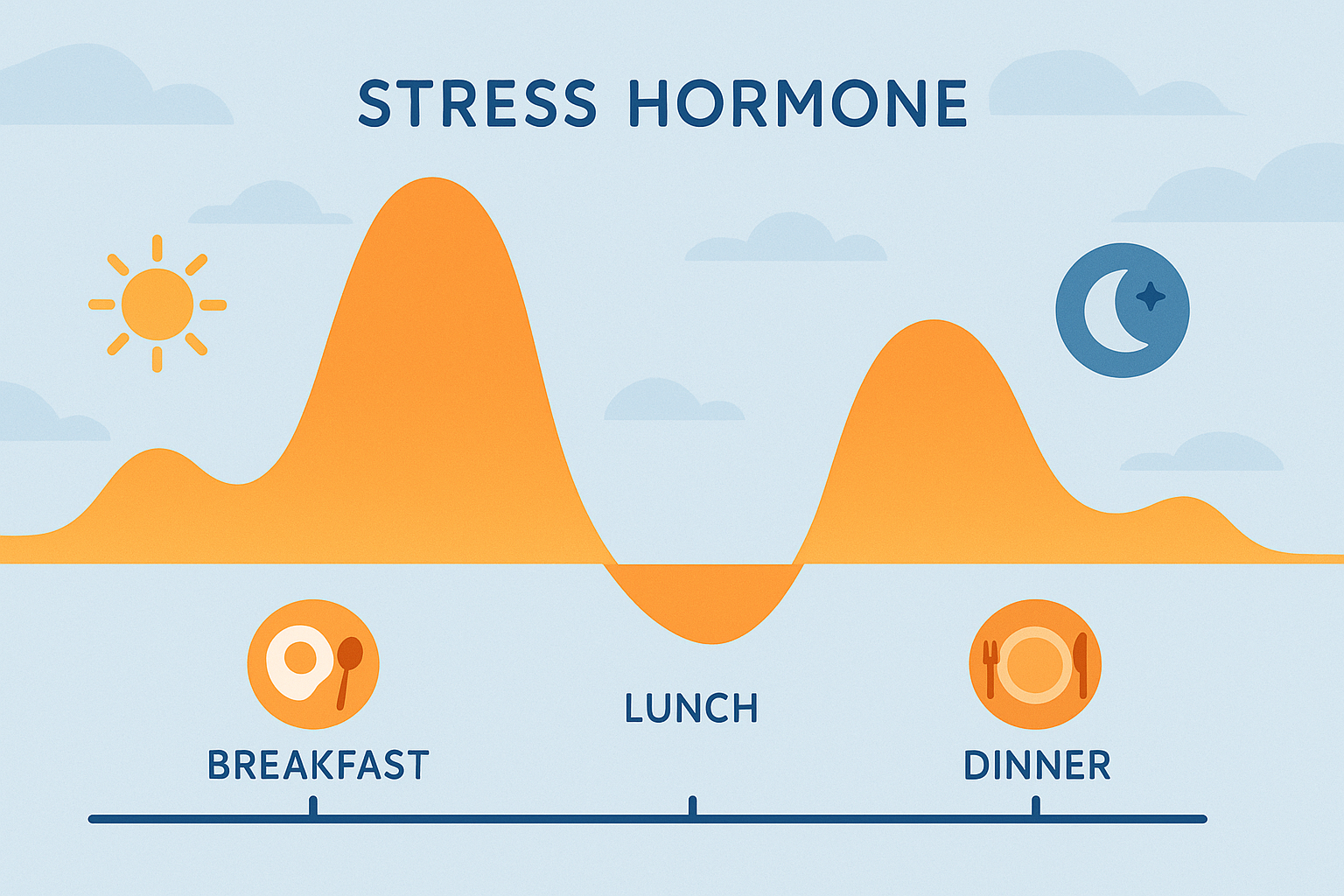
Working with Your Stress Hormones Instead of Against Them
Your stress hormone (cortisol) follows a natural daily curve that peaks in the morning and gradually declines throughout the day. Aligning your meal nutrients with this rhythm provides your body with the right fuel at the right time, preventing the energy crashes and cravings that typically derail meal plans.
Morning Stress Hormone Support
Ever notice how you can handle anything in the morning but by afternoon you’re ready to snap at anyone who looks at you wrong? That’s your cortisol naturally declining. A high-protein breakfast containing 30-40g of protein within 90 minutes of waking provides the building blocks your brain needs for mood-stabilizing chemicals right when your stress hormone naturally peaks. This sets up stable energy and mood for the entire day, which is especially important when following strategies to manage where your body stores tension related to emotional eating patterns.
Research from nutrition experts shows that the golden rule for safe weight loss is 1–2 pounds per week, and aligning protein intake with cortisol patterns significantly improves adherence to this healthy rate by stabilizing hunger hormones throughout the day.
When you skip breakfast or eat a carb-heavy meal during your morning stress hormone peak, you’re setting yourself up for blood sugar crashes and intense cravings later in the day.
The 3 PM Crash Prevention Protocol
Ever notice how you can stick to your diet perfectly all day, then completely lose it around 3 PM? Mid-afternoon meals should emphasize complex carbohydrates and magnesium-rich foods to prevent the 3 PM stress hormone spike that triggers intense sugar cravings. This proactive approach stops the afternoon energy crash before it starts.
Your stress hormone naturally dips around 3 PM, which triggers your body to seek quick energy sources. By providing the right nutrients beforehand, you can sail through this vulnerable window.
Building Automatic Stress-Response Patterns
Creating specific “interrupt patterns” in your meal plan gives you automatic responses to stress that don’t involve food. These built-in circuit breakers become second nature after consistent practice, essentially rewiring your stress response system.
The 5-Minute Reset That Actually Works
When stress eating urges hit, performing 5 minutes of box breathing while sipping herbal tea activates your calm-down nervous system and reduces your hunger hormone by 15%. This simple technique creates space between the stress trigger and your response.
When You Want to Stress Eat, Try This Instead:
- ☐ Notice the stress trigger (tight shoulders, racing thoughts, clenched jaw)
- ☐ Take 3 deep breaths before reaching for food
- ☐ Drink 8 oz of water or herbal tea
- ☐ Do 5 minutes of box breathing (breathe in for 4, hold for 4, out for 4, hold for 4)
- ☐ Ask yourself: “Am I actually hungry or just stressed?” on a 1-10 scale
- ☐ If still hungry, choose a planned snack from your meal plan
The key is practicing this sequence when you’re NOT stressed, so it becomes automatic when you need it most.
Training Your Body to Burn Fat Like a Machine
Here’s something most people don’t realize: true sustainable weight loss requires training your body to efficiently switch between burning carbohydrates and fats, a capability called metabolic flexibility. Most 30-day plans keep you locked into one fuel source, which eventually leads to your metabolism adapting and plateaus. This systematic training approach prevents adaptation while maintaining your fat-burning capacity.
Think of it like cross-training for your metabolism – you want your body to be good at burning whatever fuel is available, not just dependent on one type.
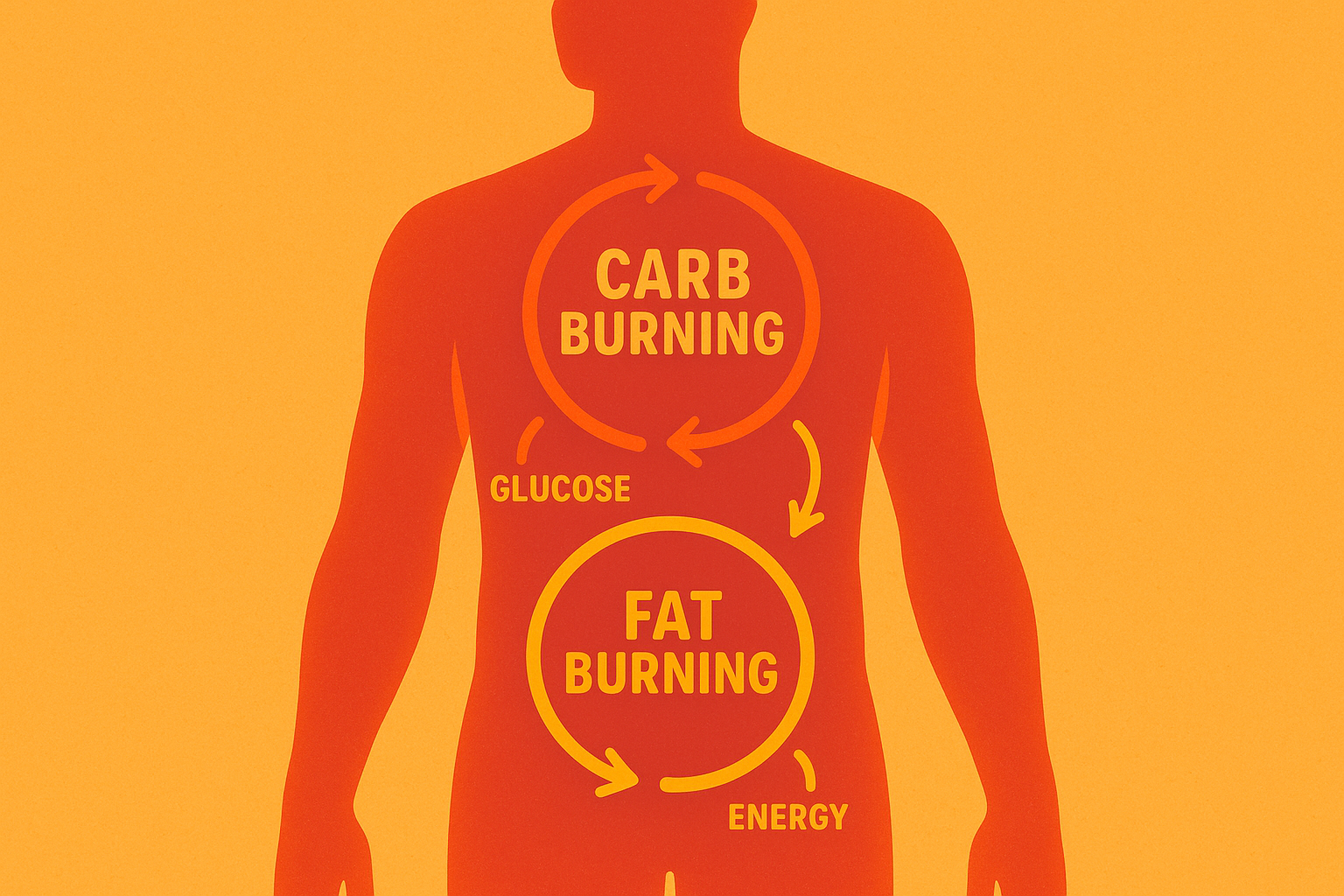
The Fuel Source Cycling Method
Instead of eating the same macros every single day (which gets boring and stops working), systematically alternating between different ratios every 3-4 days prevents your metabolism from adapting to any single approach. This cycling method keeps your body guessing while maintaining the hormonal environment necessary for continued fat loss.
Recent developments in ketogenic research show that “keto diets often reduce feelings of hunger” according to Diet Doctor, making strategic low-carb phases particularly effective during the fuel cycling approach when your body needs to learn efficient fat oxidation.
Strategic High-Carb Reset Days
Here’s what sounds counterintuitive but actually works: strategic high-carb days (150-200g) every fourth day prevent the thyroid hormone decline and leptin resistance that typically occur during calorie restriction. These planned “refeeds” actually support continued weight loss rather than hindering it.
Your body interprets prolonged calorie restriction as potential starvation, which triggers protective mechanisms that slow your metabolism. These reset days signal abundance and keep your metabolic rate elevated.
Fat-Adaptation Training Phases
Low-carb phases (under 50g) for 3 consecutive days train your cellular powerhouses to efficiently utilize fatty acids as fuel. This metabolic training can increase your baseline fat oxidation by 40%, meaning you burn more fat even at rest.
Here’s what this actually looks like in real life:
Days 1-3: Keep carbs under 50g (think: eggs for breakfast, salad with chicken for lunch, salmon with broccoli for dinner)
Day 4: Add back some carbs (maybe sweet potato with dinner or oatmeal for breakfast)
Repeat this pattern
That’s it. No complicated calculations or measuring everything to the gram.
| Day | Carbs (g) | Protein (g) | Fat (g) | What Your Body’s Doing | The Goal |
|---|---|---|---|---|---|
| 1-3 | 20-50 | 100-120 | 80-100 | Learning to burn fat | Training your metabolism |
| 4 | 150-200 | 80-100 | 60-80 | Refilling energy stores | Hormone reset |
| 5-7 | 20-50 | 100-120 | 80-100 | Back to fat burning | Building flexibility |
| 8 | 150-200 | 80-100 | 60-80 | Energy refill again | Keeping hormones happy |
Exercise-Meal Timing That Actually Works
Timing your meals around exercise creates specific windows where nutrients are preferentially used for recovery and muscle building rather than fat storage. This strategic timing maximizes the benefits of both your workouts and your meal plan.
The Fasting Workout Window
Exercising after a 12-16 hour fast increases fat oxidation by 300% and enhances insulin sensitivity for your post-workout meal. Your body becomes incredibly efficient at burning stored fat when energy stores are depleted.
New research from ketogenic diet experts indicates that “healthy volunteers remained consistently in ketosis consuming 50 grams per day” according to Diet Doctor, suggesting that strategic fasting windows can maintain fat-burning benefits even with moderate carb intake during post-workout meals.
Post-Workout Nutrient Timing
Consuming protein and carbohydrates within 30 minutes post-exercise maximizes muscle protein synthesis while minimizing fat storage. This window of opportunity ensures nutrients go toward recovery rather than expanding your waistline.
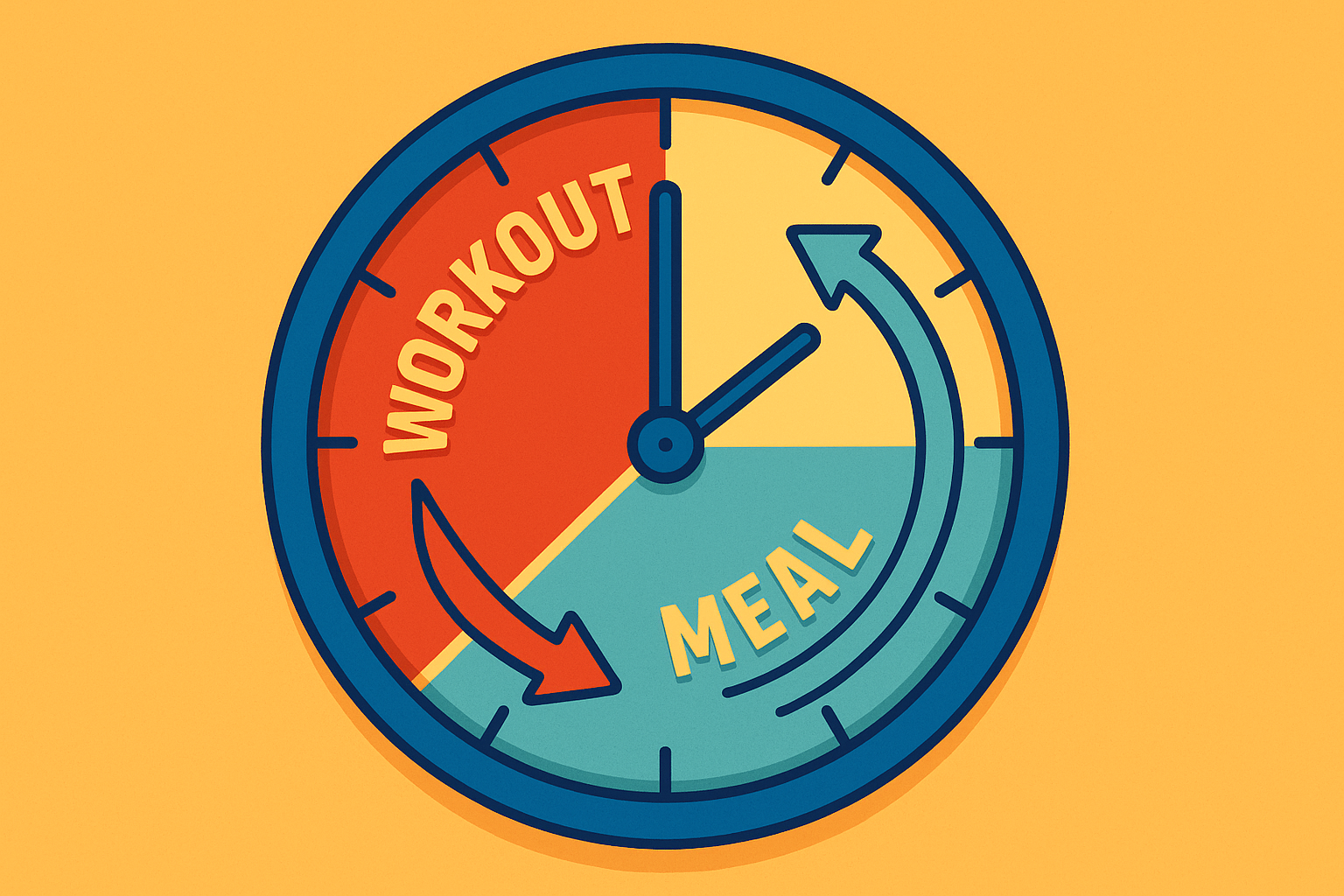
James implemented the 16-hour fasting window before his 6 AM workouts, then consumed a protein-rich meal within 30 minutes post-exercise. This timing strategy helped him maintain muscle mass while losing 12 pounds over 30 days, with his body fat percentage dropping from 18% to 15%.
Building a System That Actually Sticks
Look, I’m going to be straight with you – around Day 15, you’re probably going to want to quit. Your body will feel like it’s fighting you, the scale might not move for a few days, and that voice in your head will start whispering about how this isn’t working.
This is completely normal. It doesn’t mean you’re doing anything wrong or that you’re “broken.” It means your body is actually adapting, which is exactly what we want.
Most people fail at 30-day meal plans because they treat them as isolated dietary changes rather than comprehensive lifestyle programs that address psychological, social, and environmental factors. Success requires systematic changes to your environment, social support network, and progress tracking methods that go far beyond the number on your scale.
Clinical data reveals that nutrition accounts for 80% of any fitness goal, with the other 20% coming from your genetics and exercise regimen according to Anytime Fitness research, highlighting why environmental and behavioral systems matter more than perfect food choices for long-term success.
Making Your Kitchen Work FOR You
Creating environmental cues and removing decision fatigue through systematic meal prep and kitchen organization increases adherence rates by 78%. Your environment should make healthy choices automatic and unhealthy choices require extra effort.

The 5-Minute Kitchen Makeover
Let’s make your kitchen work FOR you instead of against you:
- Move the good stuff to eye level (put the apples where you used to keep the cookies)
- Hide the tempting stuff (top shelf, back of the pantry, wherever you have to work to get it)
- Get smaller plates – seriously, this weird trick actually works
- Set up a ‘meal prep corner’ so Sunday prep isn’t a nightmare
- Put a water bottle where you can see it
That’s it. Don’t overthink it.
Complete Kitchen Setup Checklist:
- ☐ Remove processed foods from eye-level shelves
- ☐ Stock healthy snacks at eye level in pantry and fridge
- ☐ Replace large dinner plates with 9-inch plates
- ☐ Set up meal prep station with containers and labels
- ☐ Create designated zones for proteins, vegetables, and healthy fats
- ☐ Install proper lighting in food preparation areas
- ☐ Remove unhealthy foods from countertops
- ☐ Organize spices and seasonings for easy access
Building Your Support Squad
Share your 30-day plan with 3 accountability partners who will check in weekly, join online communities specific to your meal planning approach, schedule weekly meal prep sessions with family or friends, and create a shared grocery shopping list app with your support network.
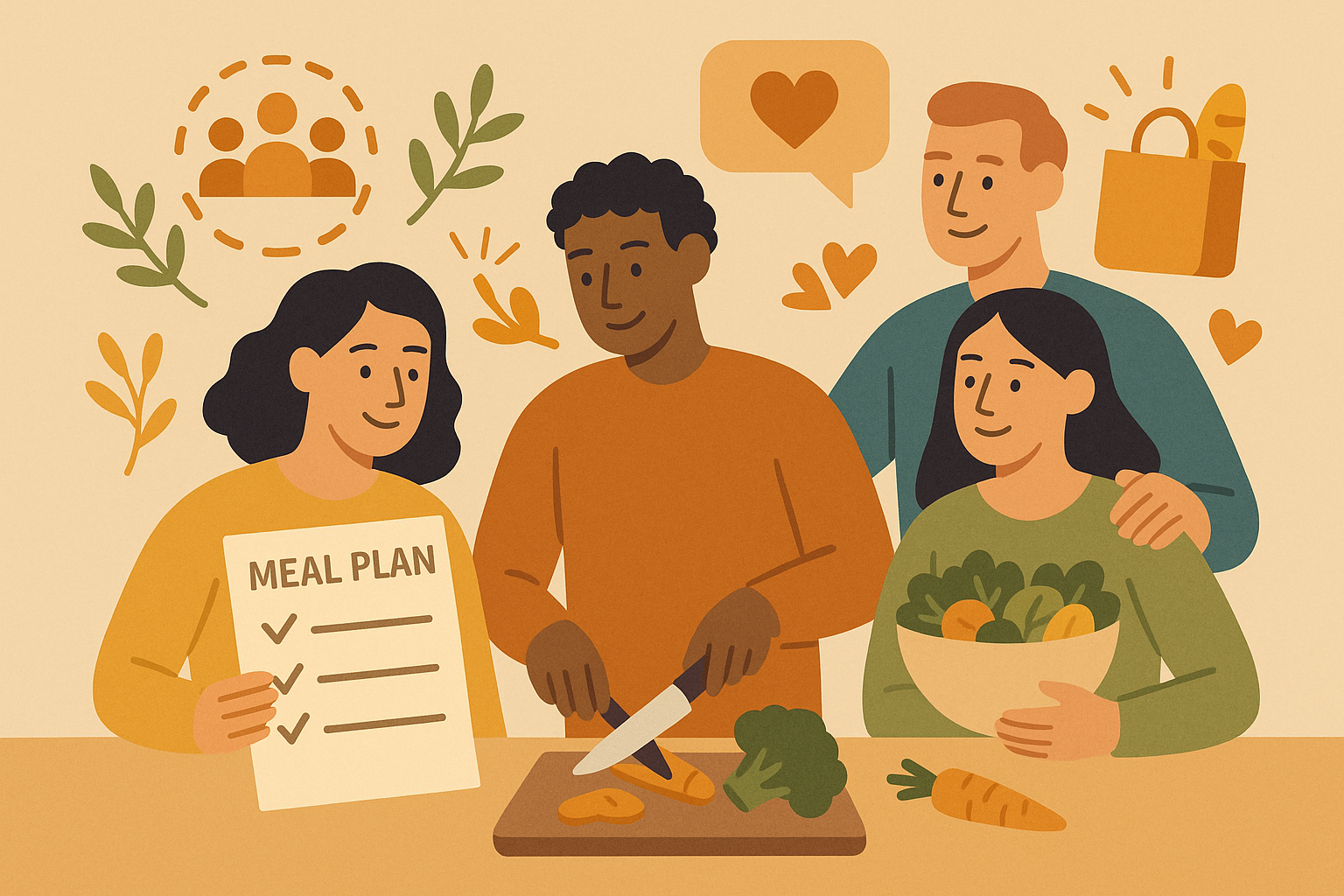
Tracking Progress Beyond the Stubborn Scale
Forget obsessing over the scale every day – it’s going to lie to you anyway. Weight fluctuations can mask real progress and lead to unnecessary discouragement. Here’s what actually matters:
- How do your clothes fit? (Try on the same pair of jeans every week)
- How’s your energy? (Are you dragging by 3 PM or still going strong?)
- How’s your sleep? (Waking up refreshed or feeling like you got hit by a truck?)
- How are your cravings? (Are you thinking about food all day or just when you’re actually hungry?)
Take a quick mental note of these things once a week. If most of them are trending in the right direction, you’re doing great – even if the scale is being stubborn.
Simple Weekly Check-In
Week: ___
- Weight: ___ lbs (same time, same conditions)
- Waist: ___ inches
- Energy Level (1-10): ___
- Sleep Quality (1-10): ___
- Cravings Intensity (1-10): ___
- Workout Performance: ___
- What felt easier this week: ___
Metabolic Flexibility Signs to Watch For
Test fasting blood glucose weekly (should decrease over 30 days), monitor how long you can go between meals without cravings (should increase), track workout performance during different meal timing protocols, and assess mental clarity during various eating windows.
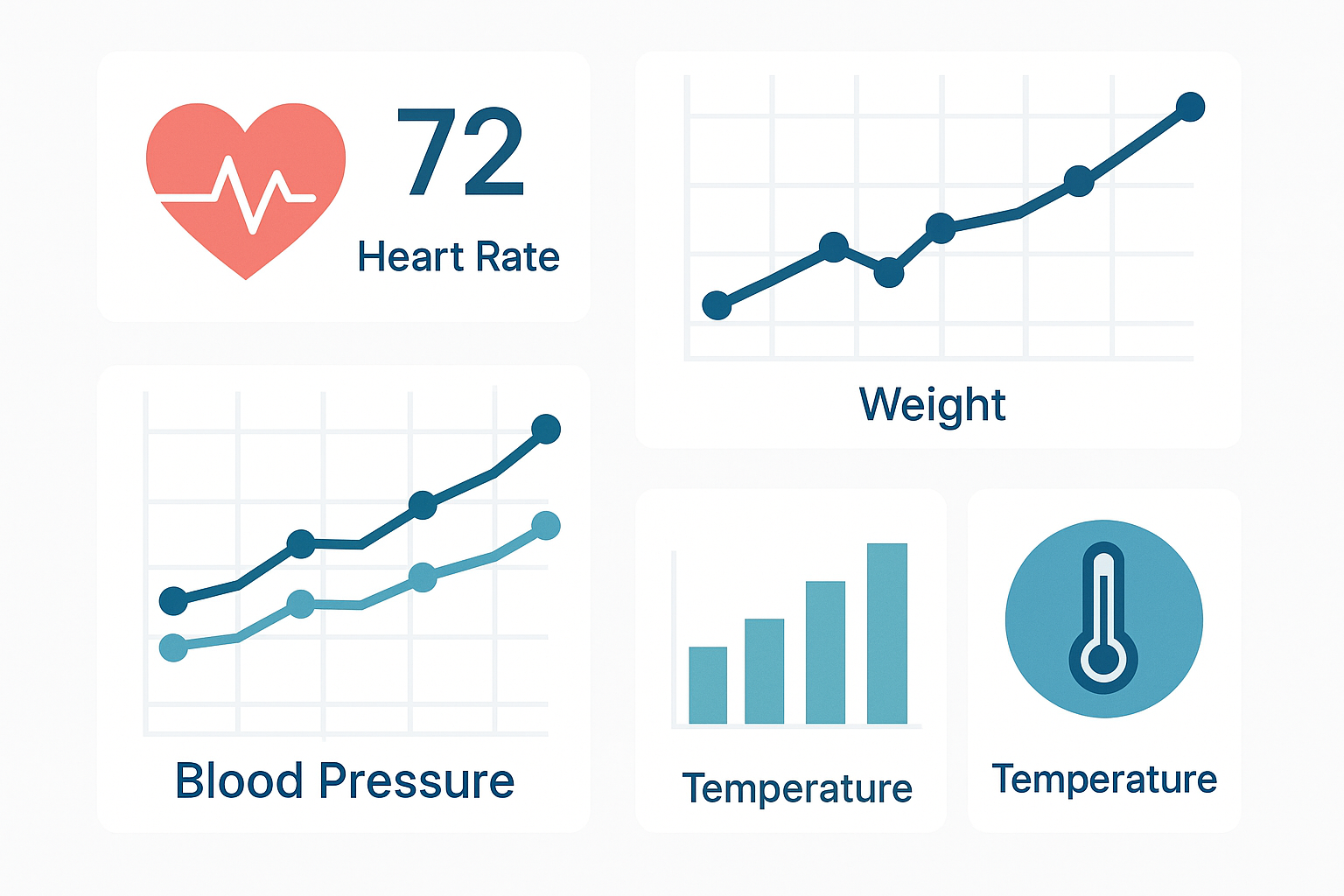
Supporting your body’s natural systems requires the same attention to quality and bioavailability that Organic Authority brings to their supplement line. Just as their marine collagen works from within to support comprehensive wellness, this neurobiological approach to meal planning addresses root causes rather than symptoms. If you’re looking to support your 30-day transformation with high-quality, bioavailable nutrients that complement your meal plan, explore Organic Authority’s carefully curated supplement collection designed to work synergistically with your body’s natural processes.

When Things Go Wrong (Because They Will)
Messed up and ate half a pizza last night? Join the club. Here’s what NOT to do: don’t throw in the towel and declare the whole plan ruined. Here’s what TO do: drink some water, get a good night’s sleep, and get back on track with your next meal. One meal doesn’t erase 20 good ones.
The difference between people who succeed long-term and those who don’t isn’t that successful people never mess up – it’s that they get back on track faster. They don’t let one bad meal turn into a bad day, or one bad day turn into a bad week.
Final Thoughts
Here’s the truth: this isn’t going to be perfect, and that’s perfectly okay. Some days you’ll nail the timing and feel like a wellness guru. Other days you’ll stress-eat crackers at your desk and wonder why you even tried.
Both of those days are part of the process.
I’ve spent years watching people struggle with the same cycle – starting a 30-day meal plan with incredible motivation, seeing initial results, then hitting a wall around week 3 when their body adapts and progress stalls. What I’ve learned is that sustainable weight loss isn’t about finding the perfect meal plan; it’s about understanding and working with your unique biological systems.
Your natural daily rhythm, gut bacteria, stress hormones, and metabolic flexibility aren’t obstacles to overcome – they’re powerful allies when you know how to engage them properly. The difference between temporary success and lasting transformation lies in this deeper understanding of how your body actually works.
The magic isn’t in being perfect – it’s in understanding your body well enough to work with it instead of against it. And honestly? Once you start doing that, the whole thing gets a lot easier.
Your body isn’t your enemy. It’s not trying to sabotage you. It’s just trying to keep you alive with the information it has. Give it better information, and it’ll start working with you instead of against you.
You’ve got this. Not because you’re going to be perfect, but because you’re finally going to be smart about it.

